Fly tying Angle Flies by Geir Kjensmo

Fly tying the Angle Flies
Geir Kjensmo show you how to tie the angle fly
.
Well, the name should have been "the natural Angle flies". The aim with these Angle flies is to position and make them float in a natural right angle
to the surface. It's important that your fly ride natural right on the surface when presented; a lot of flies tilt over in many situations, giving undesirable
imprint on the surface.
I have used these flies for nearly two seasons now and must confess that they have never failed me when imitating mayflies for selective
trout and grayling. I do most of my dry fly fishing in the rivers Glomma and Rena. Especially in the latter, big trout here can be very difficult and selective.
I
tie the flies in different colures and sizes of course, but find that the success has more to do with the fact that these flies land in a perfect natural upright
position almost every time. They also make a natural imprint on the surface, just like the real mayflies.
Imitations of the Aurivilli and Ignita, have given
me superb dry fly fishing on frequent occasions lately; occasions when other fly fishermen tear their hair in frustration.
Materials needed are few: one cdc feather, one good hackle and some synthetic fibres for wing (antron-yarn etc.)
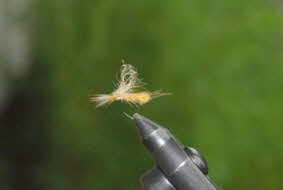 |
........... |
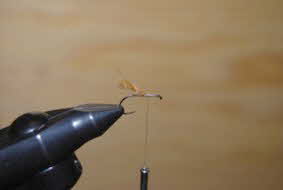 |
............ |
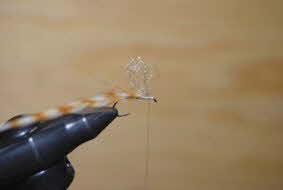 |
My solution is to leave most of the hook shank bare and use this to make "a gravity point" to land the fly in an upright position on the surface. I use one cdc feather and hold it between forefinger an thumb on each hand; then twitch the feather and double it to make back body of the fly. Also raise this section in an angle up-ward using the tying silk. |
After building a base with the tying silk, tie in the hackle |
Tie in the loop wing; pull some of the fibres, after making the loop, to “fill” the loop by making some narrower loops. |
||
. |
. |
. |
. |
. |
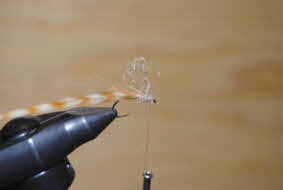 |
. |
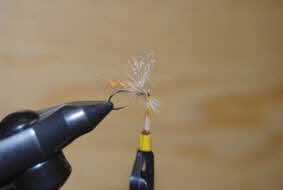 |
. |
|
Use fibres from what’s left of the cdc, rip the fibres off the feather, and make a “ball” around the base of the wing with this dubbing. |
I also use my method for hackling the flies; a variation of parachute hackle, but were the hackle is winded in an angle to the hook shank. Wind the hackle cross; behind the wing at the base of the "ball" and down underneath the hook, in front of the tying tread, and cross up again 2 turns. Tighten the tying silk when winding the hackle like this. Finish off and put on a drop of good head cement. Simple! |
Have fun, Geir Kjensmo
.
all reports page
.
Fabisch Fly Fishing english
.
Fabisch Fliegenfischen german
- Wolfgang Fabisch
- Nürnberger Str. 45
- 90542 Eckental / Germany
- Phone 011 49 9126 288640
- Fax 011 49 9126 288643
- Copyright: Wolfgang Fabisch
.
.